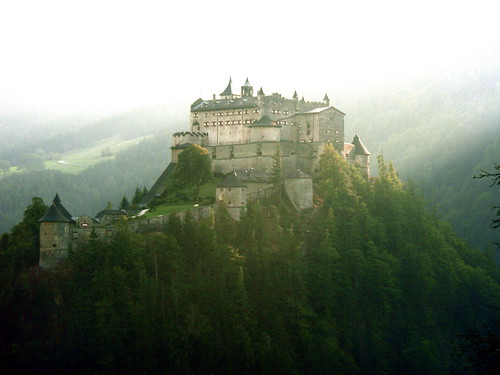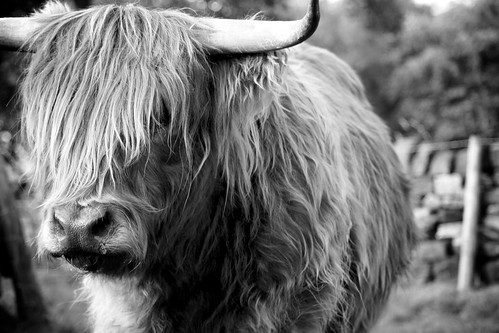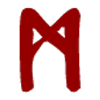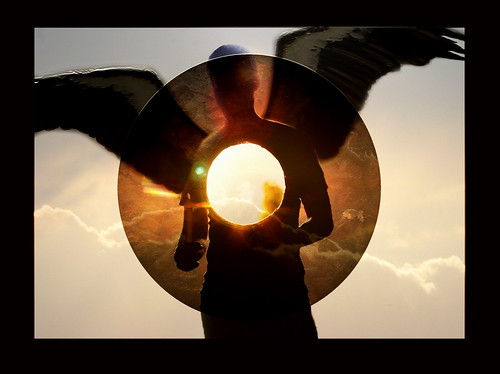Most welcome guest contributor to the site, Mahryan, addresses some frequent issues that newcomers to the runes have, in particular the idea of reversed runes, positive and negative interpretations, which are often called murk staves.
Some of us cast our runes, tipping out the whole set and letting them fall as they may. Others pull runes from our bag, usually one at a time. Either way, the runes do not always come out upright and face up. Some rune commentators see any reversal of a rune as negative, often describing it as ‘murk-stave’ (dark or at least gloomy) as opposed to ‘bright’ when in the upright position.
Others pay little or no attention to upright or reversed positions, reasoning that each rune always contains positive and negative energy anyway – the situation and our actions will determine how runic energy plays out. I agree with this.
Nevertheless, I do find the position of a rune helpful in developing my overall understanding. The importance of runic order and relationship within the Futhark is not disputed – the more we understand of the runes the more we recognize the intricacies of this. Given this, it seems to me that rune position – any aspect of position – in a reading must also have value. The following are some of my thoughts on this.
Some rune signs do not reverse or invert, but every rune when cast or drawn may come out face up or face down. There are very few in-depth discussions of face-up reversals and far less even consider what meaning, if any, may be attached to face-down positions.
I do not see any kind of positioning as simply a matter of ‘positive’ (upright) versus ‘negative’ (reversed/inverted) positions. Rather, the energies of each rune have many manifestations from the simple and mundane to the very depths of spiritual and cosmic understandings.
I pull (draw) rather than cast runes, and have thus always placed them face up, but preserving any reversed positions. It does occur to me, though, that when casting runes the fact some land face down might be of importance in understanding the manifestation of runic energy in that reading. I have only one source that deals with this. It is an out of print treasure I found second-hand called Using the Runes by D. Jason Cooper. For each rune he provides interpretation suggestions for face up, face down, both upright and reversed (as applicable). Regardless of the position runes are in my readings, I have found Cooper’s shades of meaning tremendously helpful in focussing and developing my understanding of how runic energies and relations may manifest in a situation.
I am going to use a recent experience with Tiwaz as an example. I was facing the work-related task of attempting to turn negative and adversarial criticism into an opportunity for an appreciative and respectful exchange of ideas. Instead of everyone feeling disappointed, wronged and under attack, the goal was to identify a course of action for mutual benefit.
An Example
When I am to undertake important tasks (especially sensitive ones), it is my practice to ask what runic energy I need to call upon/ bring with me. I was nonplussed on this occasion when I drew Tiwaz in the reversed position! What did this mean? As a simple reversal – not to be the spiritual warrior? To not go in fighting for what was fair and just?
Sources that do discuss reversals generally focus on the meaning in divinations. Tiwaz reversed is commonly assigned attributes of deception, waning energy, lack of courage, giving up. I have never found these satisfactory and it seemed clear to me that it would be unhelpful for me to bring along this kind of negative energy. I turned to Cooper’s little book. For Tiwaz face up but reversed he suggests:
Duel, struggle. You are going to have to fight for your honour and good name. Others will demand that you prove yourself, you cannot demand their respect without it.
Now this was a much better fit to the situation! Cooper’s other comments on different aspects of Tiwaz were helpful too, reminding me that Tyr sacrificed his hand to achieve a necessary outcome – a form of deception was involved in order to get to the greater good – it was a matter of tactics. As I considered the situation and my prospective role I began to understand that who had the ‘right’ or ‘wrong’ of it was not the point to be made. The worth of our project had to be proven. The need was for tactics that moved our opponents into allies.
My scheduled meeting was successful. I have gained a much better understanding of Tiwaz in the reversed position and, that I think I will be able to apply to reversals in general. The key point I wished to illustrate is that a reversed rune is not necessarily what is often referred to as a ‘murk-stave’ – something negative to be feared. Sometimes it is a helpful guide to nuanced action.
I do think that a reversed rune is a signal for careful contemplation. The indication is that the runic energy involved will not apply in the most straightforward way. Or, perhaps, that the energy of this rune is one we need to control or sacrifice if we are to achieve the desired outcome.
Regaining full knowledge of the runes is a work in progress for all of us. We must think deeply about every rune in a reading or meditation, considering how its energies may apply in the situation at hand. A sincere ‘beginner’ can be given just as valuable an insight as someone who has studied the runes for years. Sincerity and openness to understanding are what the keys.
Some of you may find reversed/inverted rune positions an unnecessary prop and be able to intuitively see how each runic energy manifests in any situation. For me, these individual rune aspects are valuable contributors to my understanding, but I do not regard them as negative or ‘murky’ in any way.
I do hope that Rune Secrets visitors will find these few thoughts helpful. Please share thinking and experiences with reversed/inverted rune positions – we can all benefit through collective reflection.
— Mahryan

 Othala traces back to certain words in Anglo-Saxon and Norse whose oldest meaning is ‘noble‘ or nobility, and are associatively linked to property, estate, homeland and nation-building. Othala’s core power is the wise management of resources both physical and psychic. Not the ruthless efficiency that leads to totalitarian states or monopolies, but a more harmonious give and take that leads to peace and freedom amongst the people, a state of balance between order and chaos.
Othala traces back to certain words in Anglo-Saxon and Norse whose oldest meaning is ‘noble‘ or nobility, and are associatively linked to property, estate, homeland and nation-building. Othala’s core power is the wise management of resources both physical and psychic. Not the ruthless efficiency that leads to totalitarian states or monopolies, but a more harmonious give and take that leads to peace and freedom amongst the people, a state of balance between order and chaos.





 The symbol itself could represent the upper branches of Yggdrasil, a flower opening to receive the sun (SOWILO is the next rune in the futhark after all,) the antlers of the elk, the Valkyrie and her wings, or the invoker stance common to many of the world’s priests and shamans. In a very contemporary context, the symbol could be powerfully equated to a satellite dish reaching toward the heavens and communicating with the gods and other entities throughout this and other worlds. I find this metaphor particularly useful, due to my embrace of technology, but if it doesn’t work for you, use the older interpretations.
The symbol itself could represent the upper branches of Yggdrasil, a flower opening to receive the sun (SOWILO is the next rune in the futhark after all,) the antlers of the elk, the Valkyrie and her wings, or the invoker stance common to many of the world’s priests and shamans. In a very contemporary context, the symbol could be powerfully equated to a satellite dish reaching toward the heavens and communicating with the gods and other entities throughout this and other worlds. I find this metaphor particularly useful, due to my embrace of technology, but if it doesn’t work for you, use the older interpretations.